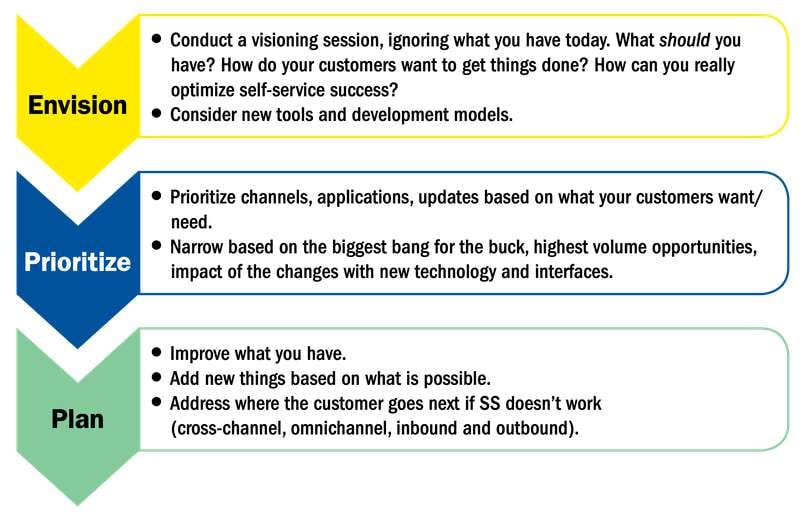
If you’re like me, you may waffle between excitement and cynicism over self-service (SS). Over the years, there has been a lot of hype over SS, but that enthusiasm has been tempered by equal measures of disappointment when reality falls short of promise. Yet I remain hopeful that astute deployment of new technology may tip the scales in favor of excitement. My list of potential game-changers includes:
- Natural language
- APIs and SDKs
- Bots
- Knowledge management
- Search engines leveraging AI and Bots
- Biometrics
- Artificial Intelligence
I’ve written articles and delivered webinars on each of these technologies. It’s well worth getting up to speed on the opportunities that they present. But to reap that potential, your task is to start planning with a strategic mindset.
Here’s the trick: The contact center must collaborate with other channel owners like digital channels, marketing and IT. The contact center focuses on IVR because they typically own it, but this effort needs to be broad, looking at the web and mobile, and the new things like bots, and even the entry points outside of the corporate boundaries.
Many companies have a “digital transformation” or “digital strategy” initiative. Self-service planning presents the opportunity to synchronize that effort with the contact center—for all self-service channels and for scenarios where customer needs cross into assisted service.
Here’s how to get started:
Planning is fun, but execution is where things really happen. Define projects around the “Customer Experience” (or Journey). Don’t forget to tie in KM and AI as these broader capabilities can impact a variety of SS tools. Even as projects may be broken into sub-projects to address various user interfaces, don’t lose sight of the bigger picture and how these all work together.
“Fix” what needs fixing without overinvesting in things customers won’t use. Put the right apps in the right channels, get rid of apps that aren’t used, and don’t try to force use. Make sure that all of the apps you support are genuinely customer friendly. Challenge yourself to experience the apps you currently support through the eyes of the customer. For example, if you were to put your IVR through its paces:
- Call each number that points to the IVR
- Go down each menu and sub-menu path (using calls, not some out of date documentation!)
- Do some counting and timing
- How many voices?
- How many prompts?
- How many layers to get to an outcome?
- How many disconnected lists?
- How many dead ends?
- How long does it take to get to an agent?
Identify the red flags and show how you are going to fix them to align with best practices like single voice, shorter menus with fewer layers, no dead-ends, easy and fast for customers to get where they want, etc. Revise call flows, menus, prompts and recordings. And add proper tracking and the processes to follow up on what is working and isn’t, and tune for success!
Create a similar task list for other channels. Put focus groups together to gain additional insights. Listen attentively to their experiences and find out what would make them more active SS users.
You may be disappointed by the fact that SS has not made as big a dent in your agent-assisted contacts as you’d like. But volumes in SS are still growing. So you might as well figure out how to give your customers the best experience possible in these channels.




